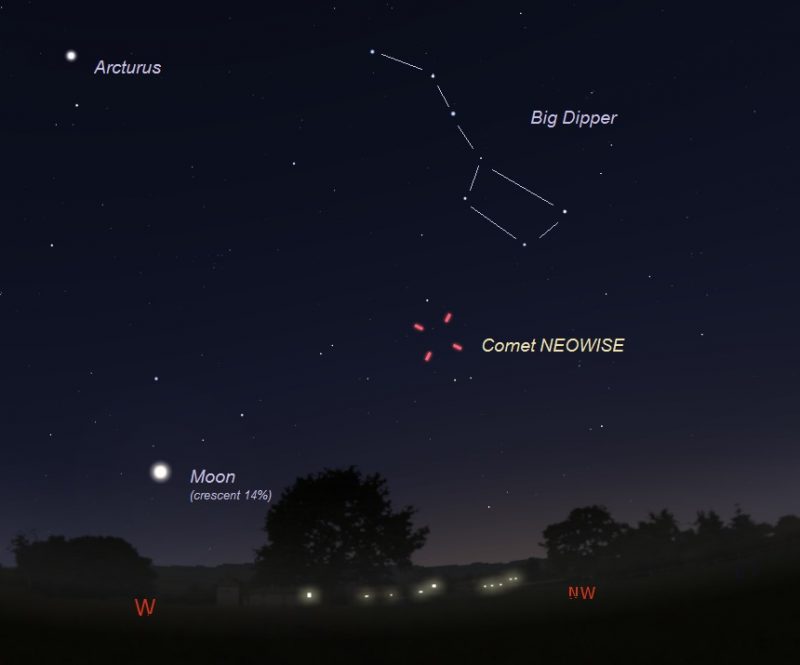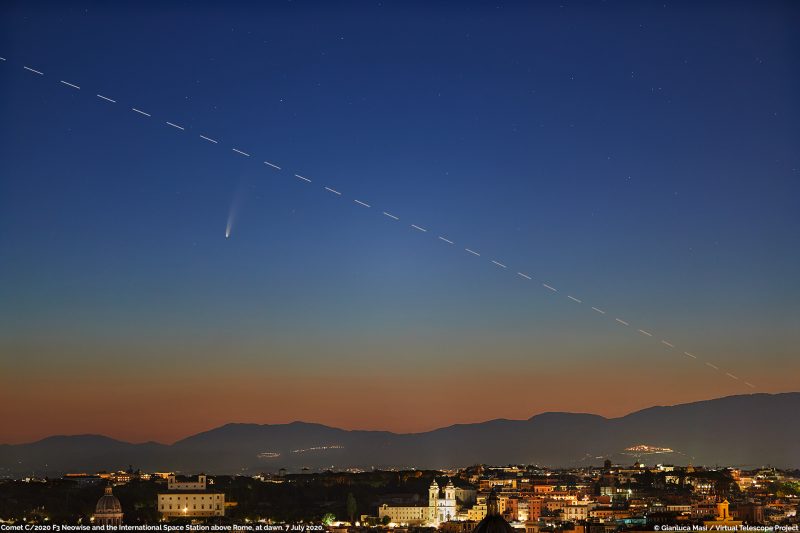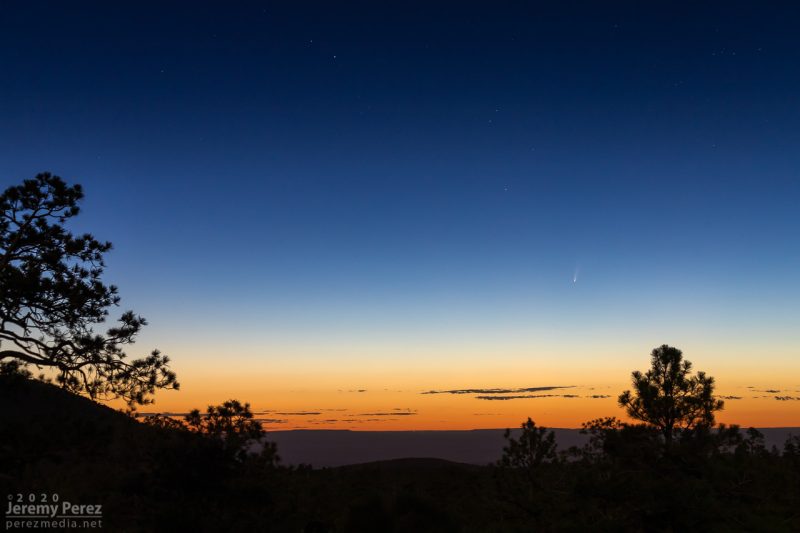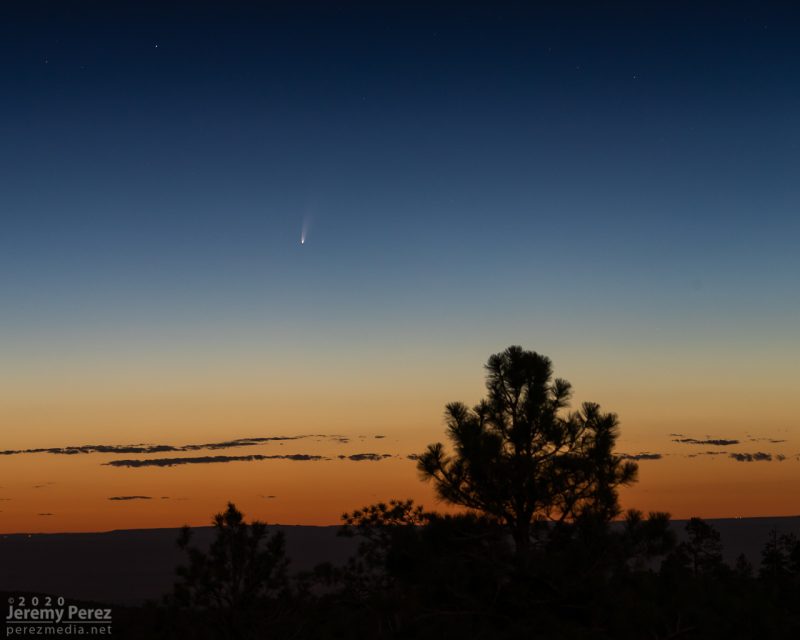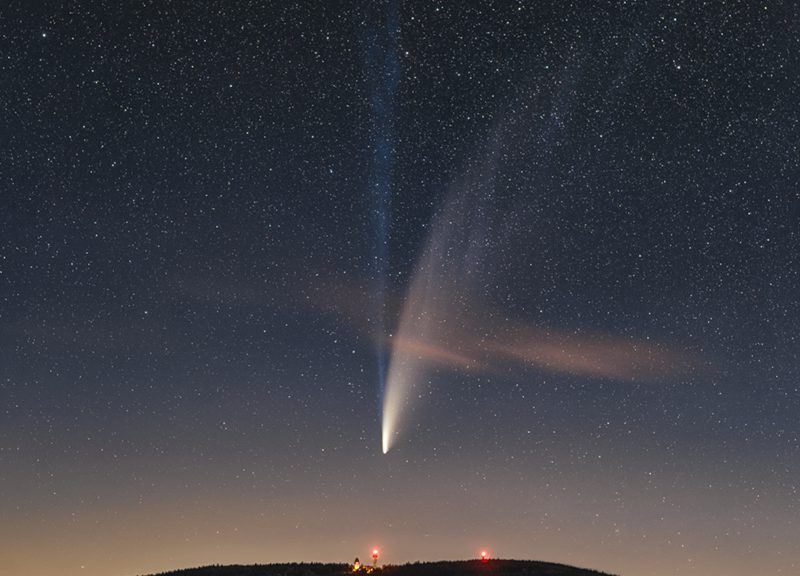
Comet Neowise Over Star Valley
Last night(Wednesday) the Comet Neowise was captured on a couple of the Star Valley Weather Cams
This is the cam located north side of Star Valley Ranch looking north toward Alpine
This cam is located 2 South of Bedford looking north toward Star Valley Ranch
View from Jackson Golf across the Tetons
Should be visible again the next few nights based on the following Comet Discussion
How to see Comet NEOWISE
Comet C/2020 F3 (NEOWISE) is far to the north on the sky’s dome, visible now (with optical aid) to observers in the northern U.S. and Canada in the early evening skies. Charts and more info here.
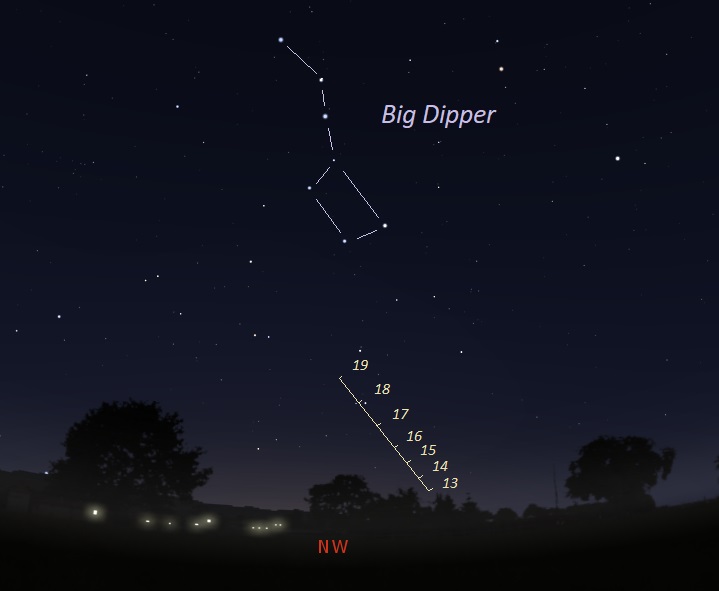
Location of Comet NEOWISE just after sunset from July 13 to 19. Face northwest at dusk, avoiding trees or buildings to have a clear view of the northwest horizon. Sweep with your binoculars around the location for the comet marked on this chart. Observers at lower latitudes will see Comet NEOWISE lower in the sky, while it will appear higher for observers farther north. This comet is not visible from the Southern Hemisphere. Opportunities for evening viewing will be improving in the days ahead. Illustration by Eddie Irizarry using Stellarium.
We still have to wait for another very bright comet, what astronomers call a great comet. But a wonderful binocular comet has been gracing our early morning skies, and now it’s visible in the evening as well, for observers at northerly latitudes such as those in the northern U.S. and Canada. Later this month, the comet will become visible in the evening for those at latitudes like those further south in the U.S. Sorry, Southern Hemisphere observers, this comet isn’t visible to you. Many observers have reported that – once you spot it with binoculars – you can remove them and glimpse this comet as a fuzzy object, using only the unaided eye. Using binoculars or other optical aid is a must, though, if you want to see this comet’s splendid split tail. The comet is called C/2020 F3 (NEOWISE). If it remains at its current brightness, it might be even easier to spot in the evening during the second half of July than it has been in the morning sky so far. The comet will be gradually higher each night, just below the Big Dipper, as seen in the evening charts, above and below.
Check the bottom of this post for a few photos, but – for many, many glorious shots of the comet from people throughout the Northern Hemisphere – visit EarthSky Community Photos. Thank you to all who have submitted photos!
Submit your own photo of Comet NEOWISE here.
Be sure to bring along binoculars if you want to see Comet NEOWISE. If you don’t have binocs but do have a good camera, a great alternative is to capture a few seconds long exposure image of the approximate area of the sky. Try at different magnification or zoom settings, and the results should reveal the comet’s nice tail.
Comet NEOWISE will be closest to Earth on July 22-23, 2020. It will pass at some 64 million miles (103 million km) from our planet. The good news is that – if the comet continues looking great – the view during the night of closest approach should be nice for many of us at temperate latitudes in the Northern Hemisphere. Although binoculars are required for the celestial visitor, it will be visible at the same time we see a beautiful crescent (not too bright) moon.
Location of Comet NEOWISE on the night of closest approach to Earth – July 23, 2020 – as seen from the central U.S., facing west-northwest just after sunset. Illustration by Eddie Irizarry using Stellarium.
View at EarthSky Community Photos. | The wonderful binocular comet that’s been gracing our early morning skies – Comet NEOWISE – is now also visible in the evening, with optical aid, for latitudes like those in the northern U.S. and Canada. James Younger captured this image of NEOWISE and an aurora (the green glow on the right in this photo) on July 14, in the evening, from Vancouver Island in British Columbia, Canada. Thank you, James!
Want a morning chart? The comet is becoming harder to see in the morning now. Try going outside about an hour before sunrise, and don’t just look once … look as the minutes tick by for the comet to rise high enough into the dawn sky for you to spot it. There’s a very narrow window for spotting it, when it’s still dark enough in the sky to see the comet, but when the comet has risen high enough above your horizon to be visible. Again, observers at northerly latitudes will have the best view. The chart below is for July 17, just before sunrise .
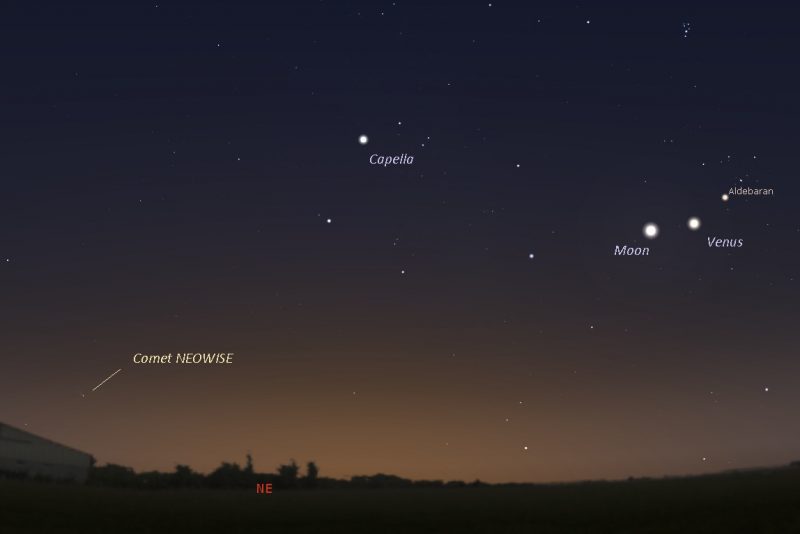
Location of Comet NEOWISE just before dawn on or around July 17, as seen from U.S., facing northeast about 45 to 60 minutes before sunrise. As the days progress forward, look for the comet to the north (left) of the location marked on this chart. Venus is the very bright planet, near the bright star Aldebaran now. while Capella is a bright star seen toward the northeast now at dawn. Illustration by Eddie Irizarry using Stellarium.
Let’s look at some more photos! And be sure to check out EarthSky Community Photos for still more. We are receiving many, many images of the comet each day.
A wonderful binocular comet has been gracing our early morning skies, and now it’s visible in the evening as well, with optical aid. At present, it’s best seen from latitudes like those in the northern U.S. and Canada, but the comet will be becoming easier to see as the weeks pass. The comet is called C/2020 F3 (NEOWISE). This image is from Bob King – aka AstroBob – in Duluth, Minnesota. He wrote: “My first view of Comet NEOWISE at dusk instead of dawn from a lake near Duluth on July 11. Comets and water naturally go together as they’re thought responsible in part for delivering water to the early Earth.” Thank you, Bob!
View at EarthSky Community Photos. | Gianluca Masi of the Virtual Telescope Project captured Comet NEOWISE on July 7, 2020, along with the International Space Station (dashed line), in this dawn view of Rome, Italy. “What a sight!” he wrote.
View at EarthSky Community Photos. | Composite image of Comet C/2020 F3 (NEOWISE) captured by Marsha Kirschbaum in San Leandro, California, on the morning of July 5, 2020. She wrote: “It was a really early a.m. wakeup call for me. This icy celestial visitor survived its pass by the sun to put on a splendid show at 4:45 a.m. this morning. After a night and early morning of the dull background roar of fireworks punctuated by really loud ‘bombs’ with the smell of smoke, I was really doubtful I would see the comet because of the haze. And there was a lot of it as can be seen on the horizon in this image. I couldn’t quite see it with the unaided eye, but my 200 mm lens saw it just fine. My kind of celestial fireworks.” Thank you, Marsha!
View at EarthSky Community Photos. | Alexander Krivenyshev in Guttenberg, New Jersey – of the website WorldTimeZone.com – wrote: “Despite a layer of clouds on the horizon, I was able to capture my first comet over New York City on the early morning of July 6, 2020.” Cool shot, Alexander! Thank you.
This image – taken on the morning of July 5, 2020, by Jeremy Perez at Sunset Crater in Arizona – shows comet C/2020 F3 (NEOWISE) on the same scale that you might see it with the eye alone. Try to use binoculars to reveal all the beauty of this comet. Used with permission. Thank you, Jeremy!
Another July 5 shot of comet C/2020 F3 (NEOWISE) by Jeremy Perez in Arizona. This one is more of a close-up. “It was an easy naked-eye object,” wrote this experienced sky observer, who was looking in a desert sky, “but really rewarding through binoculars.” Used with permission. Thanks again, Jeremy!
